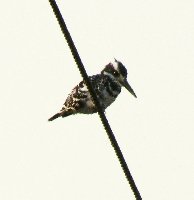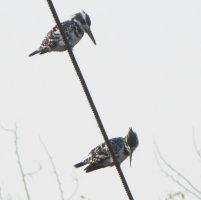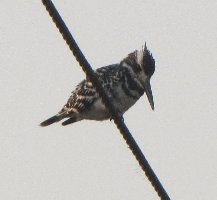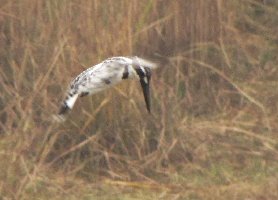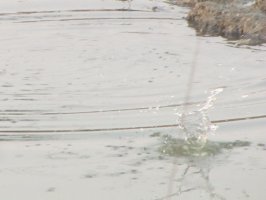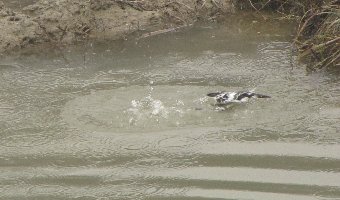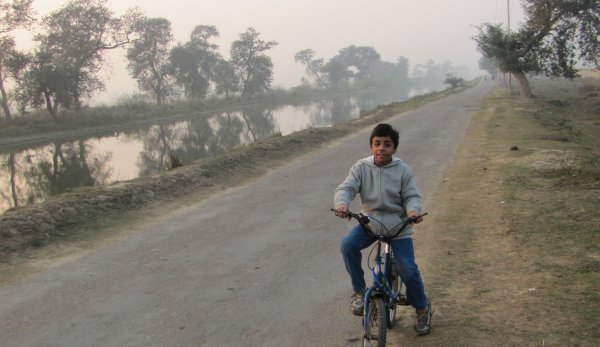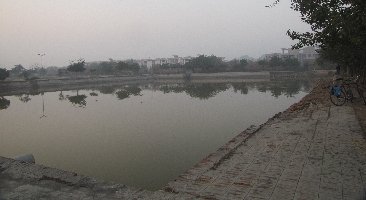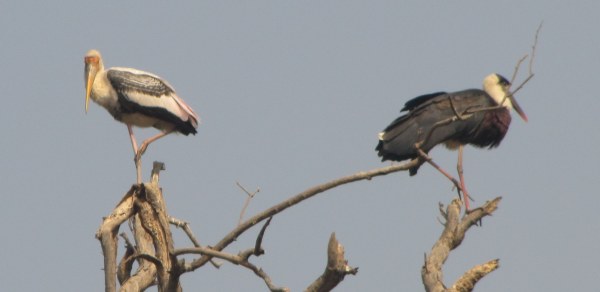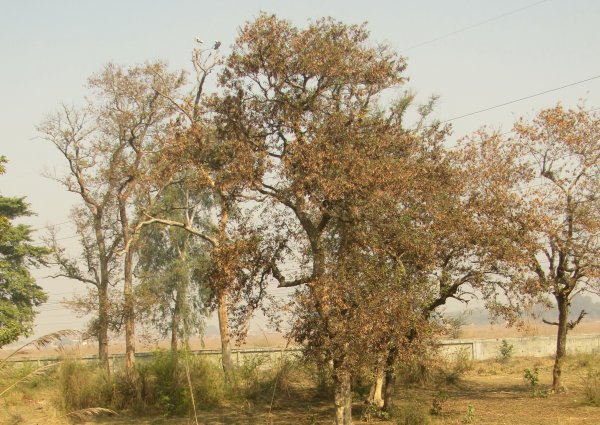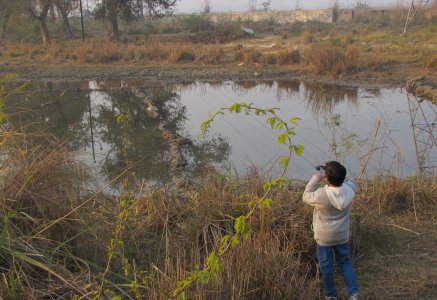
Birding at the pond. There are two pond herons in the picture (one at the center, other at the right bank). When Promit tried to sneak in, but both herons flew off. They were soon back, however.

The campus sits at the fringe of civilization. Beyond the boundary flows the Lower Ganga canal, a rich birding area. Beyond it are many picturesque villages: Gambhirpur with its old temple and jheel, Baghpur with its three herds of free-roaming geese, RaiGopalpur with a lovely bridge over a branch canal, Samratpur where I saw a field covered with three species of storks and black-headed ibises, all within 10-15km.
All the birds on this page (except the storks at bottom) were observed at a pond just outside campus during a two hour period before dusk, January 23, 2010. This pond is just 1.5km from IITK. Promit, whom you see in this picture, had learned bicycle barely a month back when he joined me on today's bicycling trip. To get there: